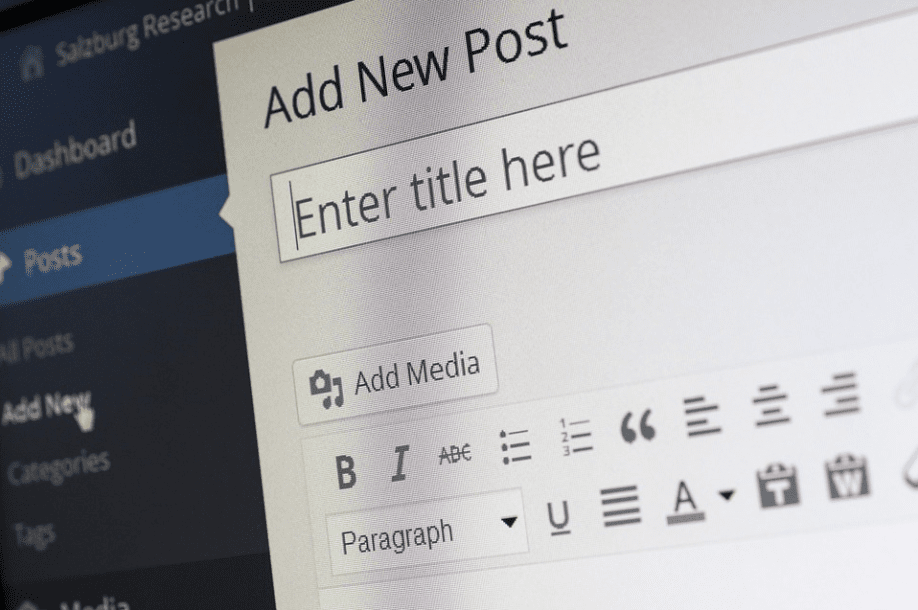Nowadays, we are struggling with information overload, since we have to go through so many emails and newsletters in our daily inboxes (you know better if you are a marketer). To try and reduce stress levels and workload, users will turn to email management platforms
Having a structure on how to manage your emails will give you more time and the ability to produce better work. After all, managing emails is time-consuming and more than 80% of users will keep their emails open in the background.
However, there are plenty of alternatives for effectively categorizing and managing your emails. Therefore, let’s dive deeper into this article to find out the most effective methods for doing so.
1. Categorize your emails
Categorizing your emails will help you reduce the huge mess in your inbox. Nevertheless, plenty of platforms can help you automate workflows that use unorganized data such as documents, emails, survey responses, and more.
For instance, Levity is one platform that allows you to integrate with Make. Now, you can effectively categorize emails with Levity and Make. After this integration is made, users can do the following:
- Automate reactions and notification workflows
- Effectively categorize email attachments and direct them to your dropbox folders
- Alert your sales team on Slack by identifying leads from the responses you receive on your outbound email campaigns
The power of automation will include AI features and integrate thousands of applications from Make’s library that allow you to automate and build workflows. Automation is excellent because it can help you reduce time consumption by wasting less time on tasks.
2. Use the delete button
The more emails you have in your inbox, the more challenging it’ll be for you and the longer it’ll take to find helpful information whenever you need it most. Instead of leaving your inbox unread, be straightforward about the emails you need to be the most productive for you.
The emails you need the most are the following:
- Helps you improve your selling skills
- Form relationships with a buyer or seller
- Helps deal with progress (gain useful information)
Even if you delete some emails unintentionally, most of them go to the “bin”, which still gives you a 30-day time period to recover the email in case you need it again.
Nevertheless, you can archive the email if you want to. It might not be in your inbox, but it’s not gone forever at least. If in case, you find you’re continuously deleting an email from the same sender, you can unsubscribe from them to not have to deal with the same issue all the time.
Keeping a clean inbox is never bad and lets you focus on more important work throughout the day.
3. Manage your email time in your calendar
Just like you make time for yourself, you can effectively manage your team for your emails in your schedule. Time management is highly important in emails because the average employee will check their email up to 11 times per working hour.
It takes quite some energy to check your emails frequently each day. Emails are not more stressful than having to pick up phone calls each day, but they do require energy and create enough stress to increase time consumption.
Overall, at the workplace, we might lose our focus because of this; losing focus on more important things that matter in the business.
Therefore, it brings us to adjusting our email strategy and this includes setting a fixed time every day to deal with your emails. Forget about checking your emails multiple times in an hour and focus on what matters in your business. Emails should have their own time, so pay maximum attention to them while you are in this time period.
Additionally, never forget one rule. Don’t multitask when checking your emails. This way, you are reducing distractions and staying focused to ensure everything is running as it should. Also, you can consider setting automation emails that inform users when you are out of the office and not send emails unless it’s urgent.
4. Create folders and labels
If you want to simplify email management and categorization, create folders and labels. There’s no special rule that applies to creating categories and it’ll highly depend on the person and the emails they receive. However, it’s best to segregate your emails.
The primary focus here is to prioritize and sort emails into different categories. The advantage here is to organize emails in this way and it becomes easy for locating specific emails in only a few clicks.
Especially when you are in marketing, you will have many labels to deal with, such as guest post requirements, ads, and more. Email categorization is essential because it includes organizing emails in a specific manner that becomes easy to local specific emails in only a few clicks.
Every label you have is a folder. For instance, if you use Gmail, it’ll allow you to use different colors for each label you have.
5. Use email templates
If you regularly send out the same message to your clients and employees, you can consider using email templates that are easy to copy, paste and edit. Your email template contains essential information, such as your name, the date, and the time the email is sent out.
You can include all the basic information you commonly send out to recipients (name, date, time), and any other additional information you find necessary. This will save you a tremendous amount of time compared to having to do the same task every day.
6. Avoid promotional emails
Before you effectively manage your inbox, it’s essential to prioritize your unwanted messages. Promotional sales messages should be the first ones to be deleted and are definitely not worth your time.
Moreover, you can consider unsubscribing from all emails you don’t need. Newsletters are only important if they come from a source that is related to your business. Other than that, your best option is to unsubscribe from them.
7. Be clear with your emails
Every email you send out should be clear. Avoid sending long emails that are confusing to read because it’ll lengthen the procedure to ask for clarification. With much less traffic ongoing within your business, you’ll find that inbox maintenance is for everyone and much faster for the marketing and sales team.
If you want to make things more simple, here are a few tips to follow to reduce time consumption:
- Use a typing assistant to streamline your writing. Use one for drafting your emails to get to your points much quicker
- Get directly to the point with your subject line and try to include easy phrases that’ll help users quickly understand what the email is about
- Save your questions in a phone call or a direct messaging (DM) tool instead. Questions may lead to longer emails and this will only take up unnecessary space
8. Use the “Only Handle It Once” (OHIO) method
OHIO is a management technique that includes dealing with emails in the most simple and fastest way possible. This doesn’t mean reading your emails once a day, but rather directly replying to them and moving on. You can take enough time to understand and save helpful information for the future.
When replying to emails, you are required to perform the following:
- Forward the email
- Reply
- Organize a meeting
- Turning the email into a task that requires attention
- Don’t do anything (if it’s not urgent)
OHIO is an excellent rule to benefit from. It’s usually used for reducing maintenance and saving time. Nevertheless, it’s an excellent way of building valuable relationships in a short period of time for your business.
9. Use email management tools
There are numerous software developers to make users’ communication much easier through email. The proper tools can save you enough time in the following ways:
- Creating email analytics data so you can learn from audience behaviors
- Simplifying the email design process
- Automating tasks
- Organizing customer data
- Creating message templates and more
The whole idea of email categorization and management
Categorizing and managing your emails is highly important if you want to achieve the ideal results. Replying to every email might take you more time than you think. Therefore, it’s essential to find a simple way of replying to emails and creating labels for each email category. After all, you want to make everything simple and not complex.











0 Comments